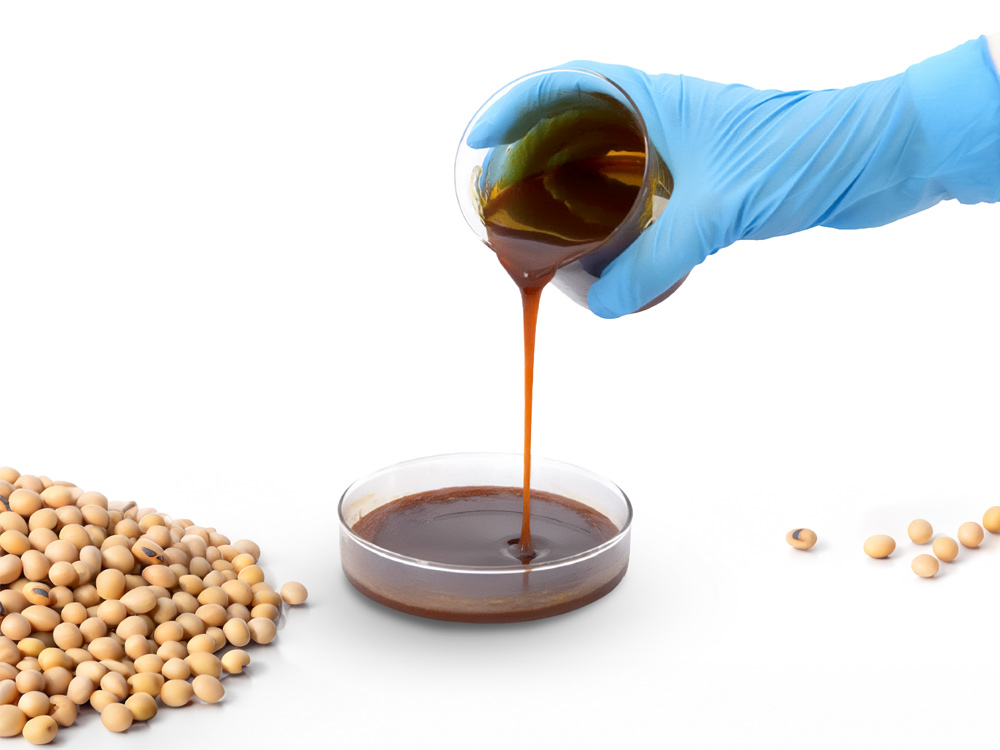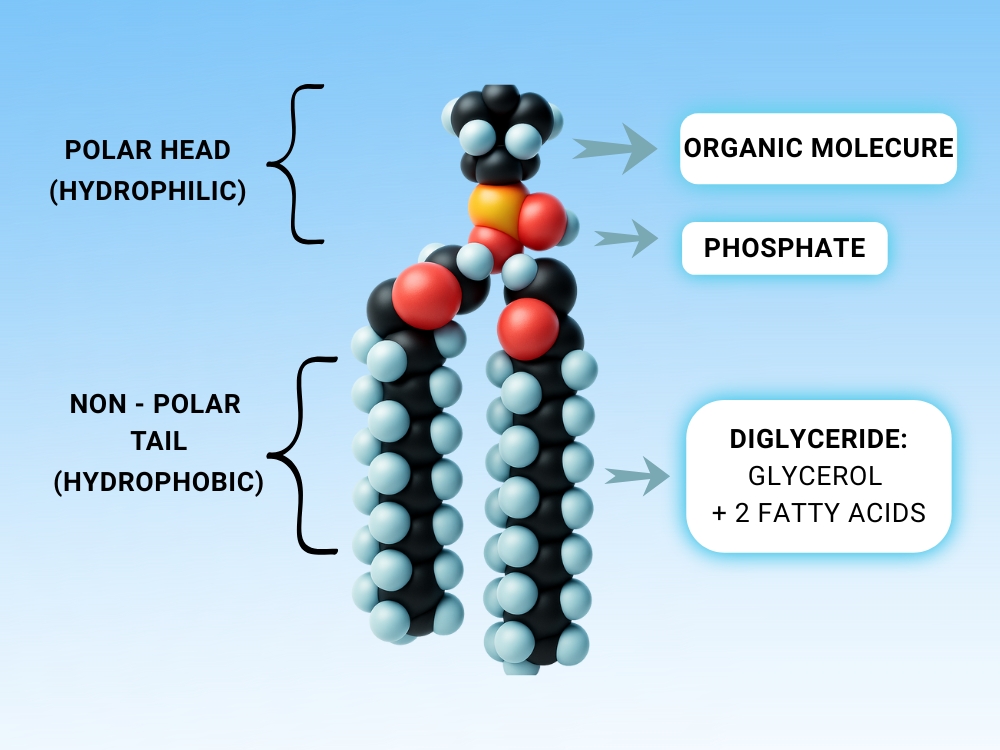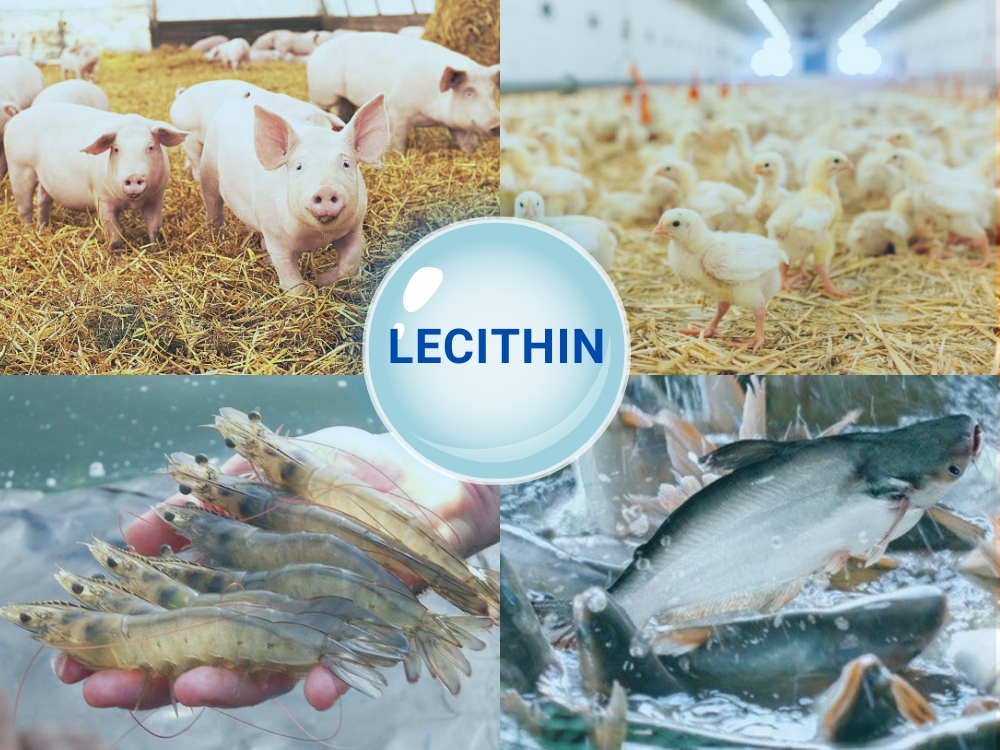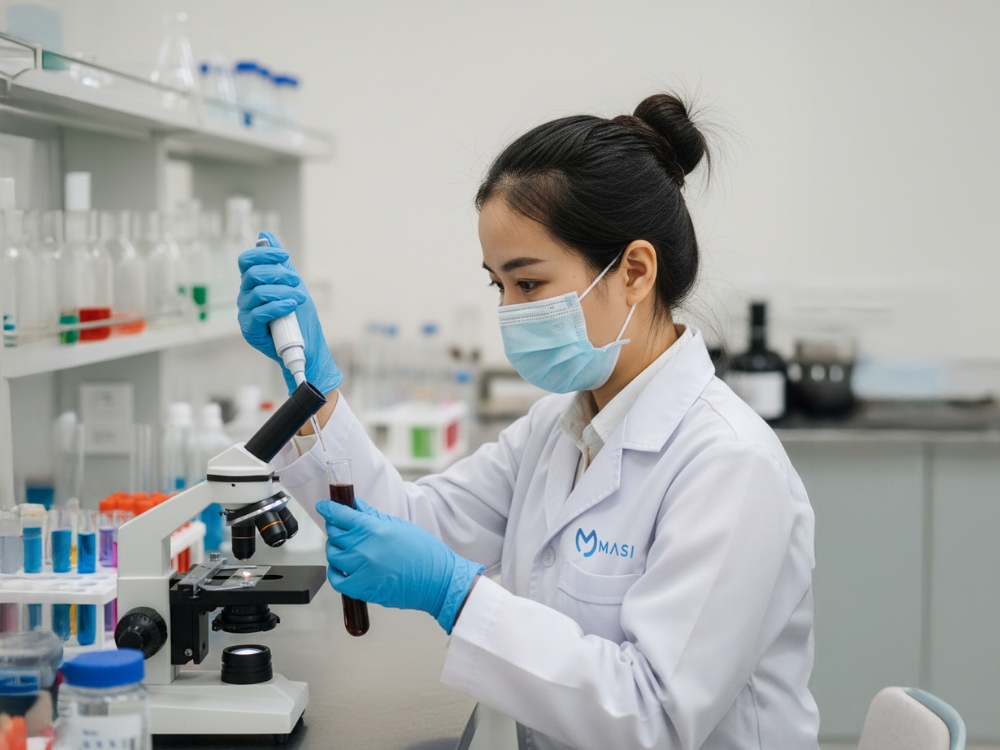In modern animal husbandry, optimizing feed efficiency and improving livestock health are top priorities. Among the nutritional additives widely adopted by feed mills in recent years, Lecithin has emerged as a natural phospholipid source known for its emulsifying ability, enhanced energy absorption and improvement of feed pellet structure. So, what is Lecithin, what are the benefits of Lecithin in animal feed and why is it increasingly favored? Let’s explore in the article below.
1. What is Lecithin?
Lecithin is a mixture of natural phospholipids, primarily extracted from soybean or sunflower. In the feed industry, lecithin functions as an emulsifier, dispersing oils and fats, while also providing a rich source of unsaturated fatty acids (Omega-3, Omega-6).
Unlike synthetic emulsifiers, soy lecithin is safe, biologically friendly and aligns with the industry trend of reducing antibiotics and increasing natural additives in feed.

Emulsification process of soy lecithin dispersed fats evenly in animal feed
2. Composition of soy lecithin
The main components of Lecithin include:
-
Phosphatidylcholine (PC): forms cell membranes & supports metabolism
-
Phosphatidylinositol (PI): boosts immunity and nervous system development
-
Phosphatidylethanolamine (PE): emulsifies fats, improves digestion
-
Unsaturated fatty acids (Omega-3, Omega-6)
-
Natural choline: prevents fatty liver
Thanks to this bioactive structure, lecithin feed additive supplier not only emulsifies fats but also increases the nutritional value of the feed.

Lecithin provides PC and natural choline essential for animal health
3. Product information
-
Ingredients: natural soybean extract
-
Used as an emulsifier and nutritional additive in animal feed
-
Packaging: flexible bag (flexibag) or IBC tank
-
Texture: liquid
-
Expiration: 12 months from manufacture date
-
Store in a cool and dry place
4. Product specifications
|
Characteristics |
Content |
|
Moitusture |
Max 1% |
|
Acid value |
Max 30 or 35mg KOH/g |
|
Acetone insoluble |
Min 60% |
|
Hexane insoluble |
Max 0.3% |
|
Color value (gardner scale) |
Max 12 unit |
|
Peroxide value |
Max 5 meq O2/kg |
|
Viscosity |
Max 120 poise |
5. Benefits of Lecithin in modern animal feed
Improved digestion and nutrient absorption
-
Piglets, chicks: immature digestive systems benefit from Lecithin, dispersing lipids into smaller particles, reducing diarrhea and accelerating growth.
-
Shrimp and fish try: Lecithin for aquafeed supplements essential phospholipids for cell membrane and digestive organ formation.
Liver protection animal health
Choline in lecithin reduces fat accumulation in the liver, preventing fatty liver in pigs and laying hens, improving energy metabolism.
Increased productivity - improved feed conversion ratio (FCR)
Research shows that adding lecithin results in:
-
Faster weight gain in poultry (5–8%)
-
Reduced feed conversion ratio, shortening the production cycle
-
Higher survival rates and uniform size in shrimp and fish

Supplementing feed with lecithin for shrimp feed supports growth, reduces diarrhea and improves animal digestion
6. Role of Lecithin in feed production
Oil emulsification and energy retention
When feeds contain oils/fats, lecithin disperses them evenly, preventing oil leakage and odor loss, especially in high-energy feeds for piglets and broilers.
Improved pellet durability
In aquafeed production, Lecithin:
-
Reduces dust during pelletizing
-
Enhances pellet cohesion, prevents breakage
-
Stabilizes floating pellets on water
Compliance with export standards
Soy lecithin supplier Vietnam is aligned with the trend of non-GMO, additive-free feed, crucial for exporting feed to EU, Japan and Korea.
7. Lecithin applications by animal type
-
Piglets and growing pigs: improved lipid digestion, higher energy, reduced diarrhea
-
Broilers and laying hens: faster growth, larger and stronger eggs, reduced body fat
-
Ducks and geese: better fat absorption, improved muscle development
-
Shrimp and fish: higher survival rate, harder shells (shrimp), improved FCR
-
Salmon, catfish: supplemented phospholipids increase disease resistance
8. Recommended inclusion in feed
|
Animal group |
Suggested lecithin inclusion |
|
Cattle (dairy, beef) |
0 - 2% |
|
Poultry (chicken, duck) |
0.25 - 1% |
|
Aquaculture (shrimp, fish) |
2 - 5% |
Note: Inclusion may vary depending on growth goals and feed formulas
9. Quality criteria for Lecithin
Feed mills consider:
-
Phospholipid content ≥ 60%
-
Acid and peroxide values: freshness and oxidation prevention
-
Viscosity and moisture: affecting mixing & palletizing
-
Microbiological and heavy metal tests: crucial for aquafeed & export

De-oiled lecithin powder supplier ensures phospholipid content and freshness meet feed standards
10. Trends in using Lecithin in animal feed
Amid rising demand for safe, antibiotic-reduced, high-quality feed, lecithin feed additive supplier is a sustainable alternative:
-
No chemical residues
-
Improves meat, milk and egg quality
-
Replaces part of expensive vegetables oils while providing energy and unsaturated fatty acids
-
Preferred in export aquafeed for non-GMO, additive-fee compliance
11. Masi supplies high-quality Lecithin
Masi supplies soy lecithin to feed mills across Vietnam and globally. Leveraging expertise in nutrition formulas and feed production, Masi acts not only as a supplier but also as a trusted technical partner.
-
Selected lecithin, suitable for livestock, poultry, and aquaculture, ensuring stable emulsification and mixing.
-
Formula consultation and usage adjustment based on animal type and performance goals.
-
Provides COA upon request, meeting traceability and quality inspection requirements, especially for export-oriented feed mills.
Masi supports feed businesses to optimize nutrition, enhance farming efficiency and develop internationally standardized products. Our key products for animal feed include: rice bran, broken rice for animal feed, cassava by product, cassava slices, wheat flour, rice husk and fish meal, fish oil, fish soluble paste. Contact us for more further information.
--------------------------------------
Contact information:
Masi
-
H.O: 7th Floor, Giga Mall, 240 - 242 Pham Van Dong, Hiep Binh Ward, Ho Chi Minh City
-
Factory: Lot C11, Fish Sauce Processing Zone, Phu Thuy W., Lam Dong Province
-
Factory: Hoi Hamlet, Kim Son Commune, Dong Thap Province
Email: Cs@masi.vn
Call center: 0909 411 885 - 0911 401 955 - 0979 045 766
Facebook: https://www.facebook.com/masi.fishmeal